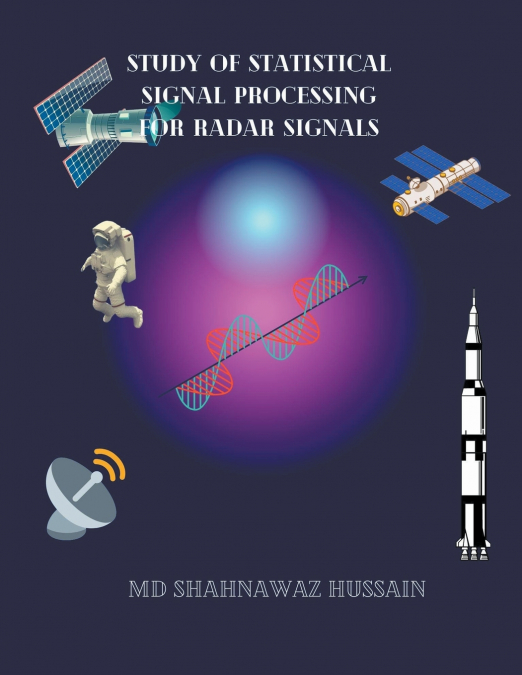
Md Shahnawaz Hussain
Statistical signal processing for signal parameter estimation is an ever-evolving field,with continuous research for efficient methods for the ever-changing needs of varioussystems that require signal processing tasks to be accomplished. Three types of parameterestimation techniques exist: parametric, nonparametric, spectral, and Bayesian.Over the past fifty years, digital signal processing has seen a virtual surge in ideas, techniques,and applications for military and commercial products/systems. The radar isone such system that is extensively employed for detecting and locating target objects.Radars can perform well for long or short distances and under conditions unreceptive toinfrared and optical sensors. These qualities render a complex system that can operatein darkness, rain, snow, fog, and haze. Therefore, radar finds use in various surveillance,defense, space, ship and aircraft navigation, and remote sensing applications.These critical applications accentuate the significance of radars and prompt scientistsand researchers to continuously improve the efficiency of signal processing algorithmsin terms of accuracy and computational complexity.In this dissertation, we have considered two types of radar signals for our study;the multiple sinusoids, which models a radar interference signal, and a passive bistaticradar (PBR) signal. The issue of multiple sinusoid estimation is a fundamental researchproblem that has been the topic of research for a long time. Passive bistatic radar has alsorecently gained traction due to its widespread military and civilian use for surveillanceand stealth purposes.Under the parametric estimation approach, the maximum likelihood estimator (MLE)is the most widely used practical method that provides optimally accurate estimates andachieves the Crámer-Rao lower bound (CRLB) for the radar signals mentioned above.However, its computational complexity is enormous if we use the grid search (GS) techniquefor maximization of the likelihood function of the data. Thus, other iterativemethods were devised instead of GS, like Gauss-Newton technique. Still, the MLE isa computationally costly approach, and iterative algorithms require an excellent initialguess and do not guarantee convergence to the maximum. In this thesis, we have proposeda novel hybrid technique that combined two statistical concepts of data-supportedoptimization (DSO) and contracting-grid search (CGS) to reduce the time-complexityof grid-search based MLE (GS-MLE). The proposed estimator, named data-supportedcontracting GS-MLE (DSC-GS-MLE), has been found to be computationally efficientcompared to GS-MLE for two and three sinusoid cases. It also yielded estimates closeto that of GS-MLE and achieved the Crámer-Rao lower bound (CRLB) like GS-MLE,a performance benchmark for estimators, for two sinusoids.We found that the proposed DSC-GS-MLE approach was still computationally burdensome.To circumvent this problem and make the estimators more practical, priorinformation about the parameters could be incorporated into the estimators. This is accomplishedusing Bayes' theorem, where we use prior knowledge in the form of a PDF.Two Bayesian techniques are minimum mean squared error (MMSE) and maximuma-posteriori (MAP), which require multidimensional integration or optimization. However,using GS or EM techniques for these purposes still caused computational complexityissues. Fortunately, Markov chain Monte Carlo (MCMC) methods provide analternative cheaper solution in this regard. Metropolis-Hastings (MH) is the most generaland frequently used MCMC.